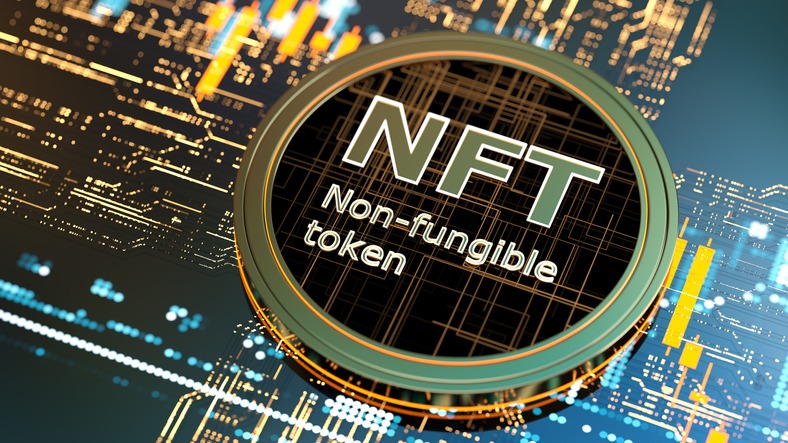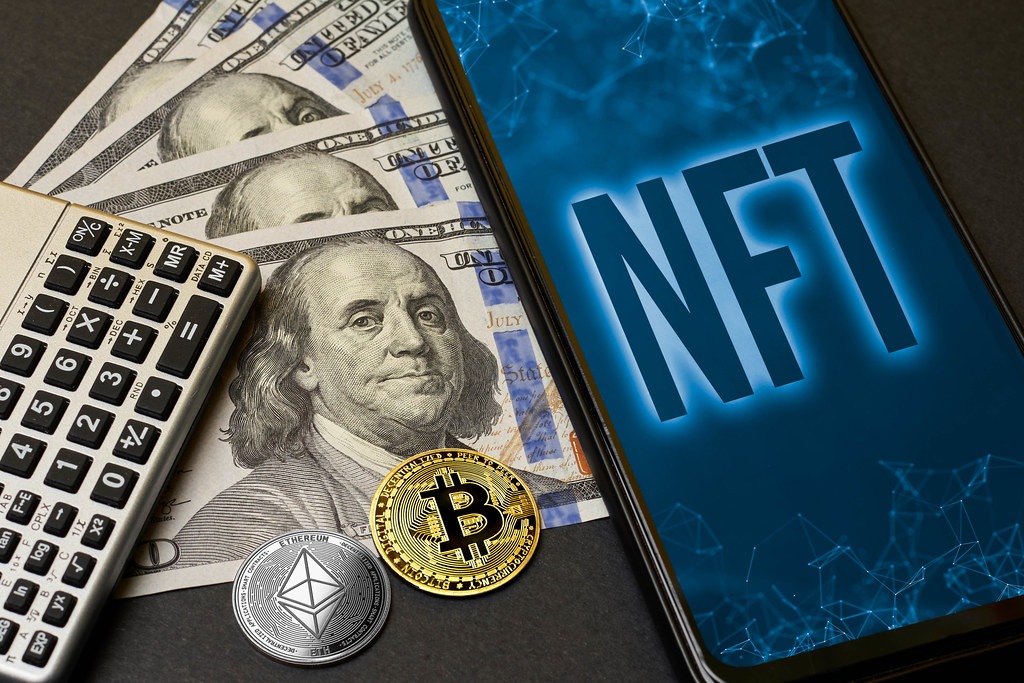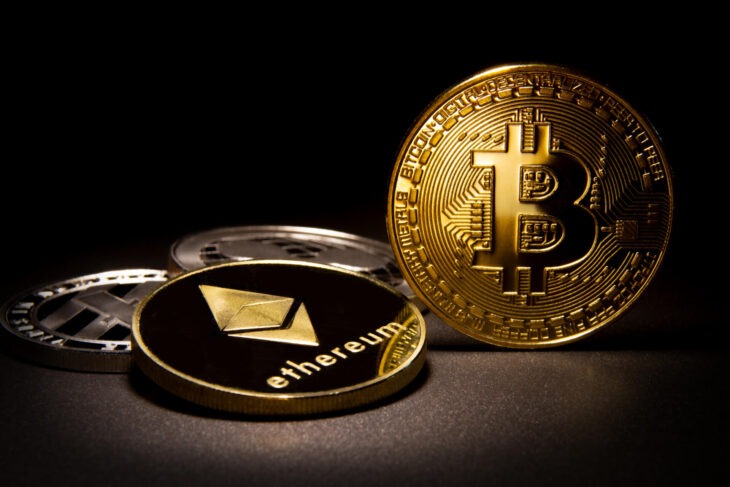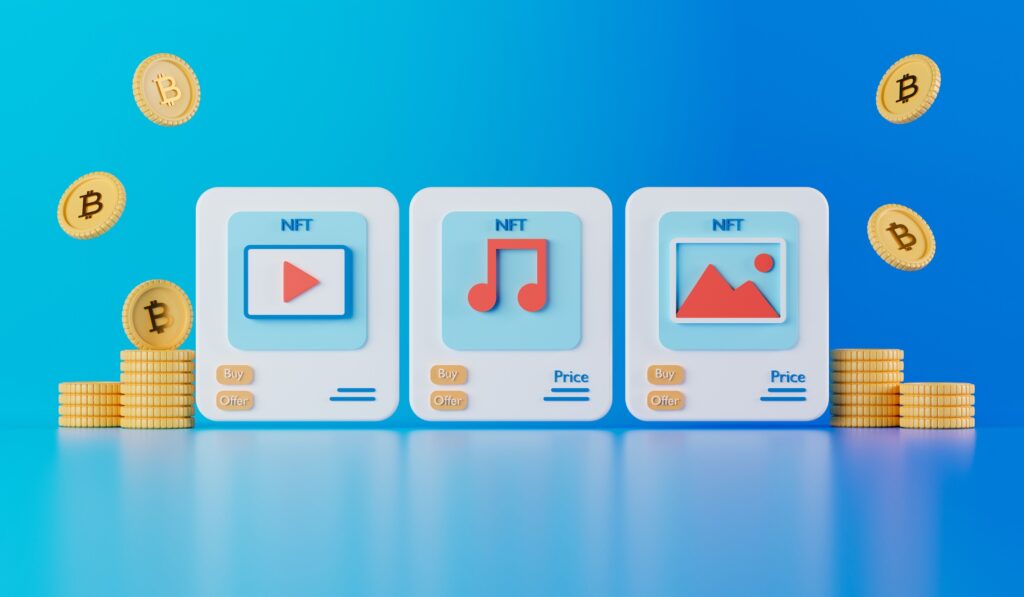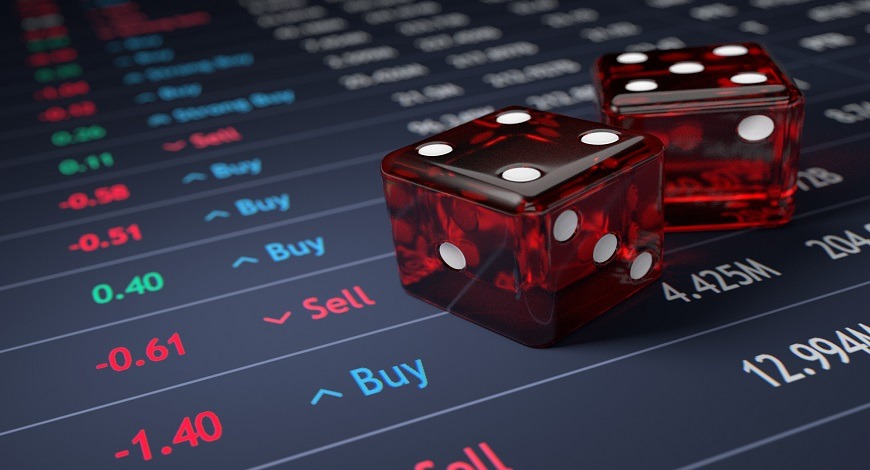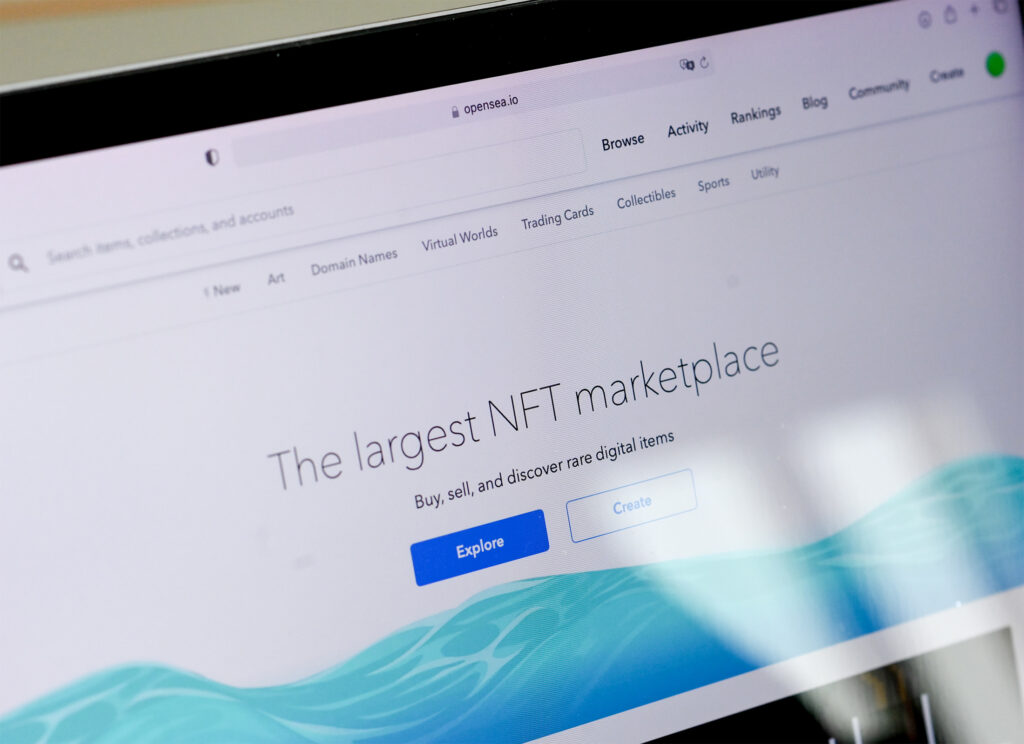Governments and large corporations throughout the world are now accepting cryptocurrency as a legitimate payment method. As additional digital assets have been created, cryptocurrencies like Bitcoin and Ethereum have risen. NFTs are an example of such a digital asset. NFT sales totaled €12.1 million in the first six months of 2020. In the third quarter of 2021, this new industry integrating modern technology had a value of €9.4 billion.
Actually what are these NFTs?
NFT stands for a non-fungible token, which implies that the quirky artworks contain a digital ledger that leverages blockchain technology to produce proof of ownership for a completely unique and non-interchangeable unit of data. NFTs, like physical art, are collectible digital assets that have value, just like physical art.
Cryptocurrencies such as Bitcoin and Ethereum have a lot in common with NFTs. Non-fungible, on the other hand, makes sense because each NFT is entirely unique and cannot be exchanged like-for-like. The file contains additional information that raises it from the realm of pure currency.
NFTs can be used to store any digital file that can be quickly duplicated, such as photos, artwork, audio, films, and tweets. Anything that can be saved digitally and is valuable enough to warrant an NFT can be used to create one. The only difference is that instead of purchasing a tangible object, you’re paying for the file and documentation that proves you own the original copy.
How do NFTs work?
The blockchain ledger verifies the NFT’s identity and ownership. Their initial platform was Ethereum; however, other blockchains have also adopted them, such as flow and Bitcoin Cash. It doesn’t matter what kind of file it is; MP3, JPG, GIF, or so on, the NFT that indicates its ownership can be purchased and sold just like any other sort of art, and the price is primarily set by market demand.
In the same way, you’d discover replicas of famous works of art in an art gallery gift shop; some NFTs operate similarly. It’s possible that some parts of the blockchain are absolutely valid, but their worth isn’t comparable to the original.
However, even if an NFT comes pre-loaded with a license to the digital content it points to, this does not guarantee copyright ownership automatically. Neither the copyright holder nor the NFT holder may be entitled to any royalties from the reproduction of the work.
Do NFTs really worth the money?
The NFT concept is new, but it demonstrates the potential of cryptos to make the digital economy operate for a broader range of individuals. For creators, creating and selling digital assets may make a lot of sense. NFTs, on the other hand, are a speculative investment when it comes to buying them. The value is unpredictable and will fluctuate depending on the demand for the work.
There is no formula for determining which collectibles will appreciate and which will not. Early detection of a new NFT trend, on the other hand, can pay off handsomely in the long run. Once sold for pennies on the dollar, some digital art pieces have sold for thousands of dollars afterward.
If you appreciate collecting art, music, and other items, dabbling in NFT investment may be a good fit for you. When purchasing an asset, consider the asset’s creator, the piece’s uniqueness, the asset’s ownership history, and if the asset can be used to create money once acquired.
In response to the claim that NFTs are a “bubble” waiting to burst, bubbles are usually only discovered after the fact. However, keep in mind that digital assets may see a cooling trend at some point in the future. Consider the risks and diversify your assets by including cryptos and stocks of companies developing blockchain technology in your NFT portfolio.
The development of NFTs is still in its early stages. It’s a potential new front in the world of technology, but investing in any movement in its infancy comes with many risks. As you learn more about NFTs, be cautious, and remember to diversify your investments to reduce the chance of a single asset derailing your wealth-building endeavors.
How to Create NFTs?
Here’s a step-by-step guide on how to create and sell your NFTs. Let’s start with choosing an item (image, sound file, video, etc) to be your digital asset.
1. Choose your item.
If you haven’t already, you’ll need to figure out what unique digital asset you want to make into an NFT first. Any kind of art or picture can be made to order. It could also be a painting or a piece of music. An NFT is a unique digital item with a single owner. So that NFTs have value.
It’s important to ensure that you own all of the intellectual property rights to the item you want to turn into an NFT. The law might not allow you to make an NFT for a digital asset you don’t own, so you might not be able to do it.
2. Decide which blockchain you want to use.
The next step is to start making your unique digital asset into an NFT. You have to figure out which blockchain technology you want to use for your NFT. Ethereum is the most popular among NFT artists and creators.
3. Set up a digital wallet.
In order to make your NFT, you’ll need to set up a digital wallet. You’ll need some cryptocurrency to start with, so you’ll need to set up a wallet first. The wallet will allow you to get to your digital assets. Metamask, Math Wallet, AlphaWallet, Trust Wallet, and Coinbase Wallet are some of the best NFT wallets on the market today, but there are many more.
Then, after you set up your digital wallet, you’ll want to buy some digital currency. In most NFT platforms, you can buy and sell Ether, which is the cryptocurrency of the Ethereum blockchain platform. If you already own some cryptocurrency somewhere else, you’ll want to link it to your digital wallet so you can use it to make and sell NFTs with your digital money.
4. Choose your NFT market.
When you have a digital wallet and some cryptocurrency, you can start making and selling your NFT. To do that, you’ll need to pick an NFT market. When it comes to trading NFTs, you aren’t confined to just one or two options. In fact, you have many options, and you can generally find a marketplace that specializes in your type of NFT, putting you one step closer to finding the right buyer or finding the right investment opportunity in your field.
Popular markets for NFTs in 2022.
a. OpenSea
It is possible to buy and sell NFTs on the OpenSea platform built on the Ethereum blockchain. For example, the site offers token-based commodities such as artwork, domain names, games, collectibles, and music. It’s free to sign up and create a marketplace on the web. It’s worth noting that OpenSea charges a 2.5% fee on every sale.
Minting and gifting of NFTs are also supported. Additionally, OpenSea offers 241 various forms of payment, making it more accessible to a wide range of customers from all over the world. Over the past few months, OpenSea has achieved an enormous milestone, selling over $10 billion worth of NFT.
b. Axie Infinity.
Axie and Axie Infinity (an online video game based on NFT) is the second-largest NFT marketplace in the world and the highest-grossing blockchain game available. All of the NFTs available for purchase and sale on the marketplace are tied to the game.
The “Axies,” or non-player-controlled creatures, are at the heart of the game. For gamers, tokens such as Smooth Love Potions (SLPs) and Axie Infinity Shards (AXS) are their main sources of income. Axie Infinity gamers have turned the game into a full-time career in regions like Vietnam, the Philippines, and Brazil.
c. Rarible
You may purchase and sell digital treasures on Rarible, a community-owned marketplace. A total of $210 million has been exchanged on this Ethereum-based NFT market, making it the fifth most active in terms of the total trading volume.
Like OpenSea, you can purchase and sell any NFT on Rarible. As a result, it can be used by a large number of people. Sellers can create vast quantities of the same NFT using Rarible and then sell them on the same ad. The fact that Rarible has a diverse catalog and appears to have focused on the digital collectibles market says something about their success. So, if you’re into online collectibles, Rarible is a site worth looking into.
d. Nifty Gateway
NFT is more colloquially referred to as ‘Nifty,’ which clarifies the origins of the Nifty Gateway term. Nifty Gateway, which runs on the Ethereum blockchain, has established itself as the premier marketplace for fans of NFT art. Unlike other sites, such as OpenSea, which cater to a broad audience, Nifty is the place to go for art.
Nifty charges quite hefty transaction fees, at 15% per transaction. This is the highest rate among non-financial trading markets. Bear in mind, however, that a typical art gallery will charge between 30% and 50%, so this is still a bargain in comparison to real-world prices.
Following your choice of an NFT market, you’ll need to connect it to your digital wallet. That way, you can pay the fees to make your NFT.
5. Upload the file.
Minting your NFT is now a reality. You should be able to find a step-by-step tutorial for uploading your digital file to the NFT marketplace of your choice. Using this method, you’ll be able to turn your digital file (such as a PNG, GIF, or MP3) into a marketable NFT.
6. Initiate the selling procedure.
Finally, you must select how to monetize your NFTs at this point in the process. You may be able to sell it for a set price, depending on the platform: You can sell your NFT to the first individual who is willing to pay the price you’ve set. A timed auction can also be set up; the bidders in a timed auction will have a limited amount of time to bid submissions. You can also begin an auction with no limits; there is no time limit. Instead, you have complete control over when the auction ends.
Setting up an auction means you’ll need to decide on a minimum price, how much royalties you’ll receive if your NFT sells on the secondary market, and how long to hold an auction for. To avoid losing money on a sale of NFTs, keep fees in mind when deciding on the minimum price.
To create and sell NFTs, fees might be expensive and difficult to manage. It’s possible to pay a commission on the sale, as well as fees for transferring the money from the buyer’s wallet to yours, depending on the platform and pricing. The price of a cryptocurrency might change, which means that fees can also fluctuate. Because of this, it’s critical to thoroughly examine the costs of minting and selling your NFTs to ensure that they’re worth it.
Before you buy NFTs, consider the following five things
In order to keep up with all the new advancements in the NFT industry, you may find yourself feeling overwhelmed. We’ve compiled a list of five things to keep in mind before transacting on an NFT marketplace to get you started.
1. What you like to do and how it affects where you buy NFTs.
It is crucial to identify what type of NFT you are most interested in before going into the realm of NFTs. Even though digital art, games, and music now dominates the NFT categories, there are countless other sub-categories.
What do you think? NFTs that are premium (e.g., developed by well-known artists or producers) or NFTs that are broader can be distinguished more general, those created by everyone else. To establish a specific type of NFT collection, the place where you buy your NFTs has a significant impact.
A wide range of NFT collections can be found on a variety of online markets. In addition to generic NFTs, there is a variety of specialist NFT marketplaces, including ones for gaming and art, as we discussed before. There are newly created premium decentralized NFT platforms, Featured by Binance, and the soon-to-be-opened Binance NFT Marketplace are also two of the fantastic places to start for newcomers who are interested in exploring a wide range of NFTs. There will always be a wide variety of NFTs available, ranging from those created by established artists to those created by up-and-coming talent.
2. Market Size & Liquidity
It’s vital to remember that NFTs don’t have the same liquidity as cryptocurrencies. Because you can’t convert an NFT into regular cash as readily as you can with cryptocurrencies, it could be difficult for anyone looking to benefit from them. To boost your NFTs’ liquidity rates, several experts recommend fractionalizing them, which is splitting your NFT into smaller pieces.
In addition to liquidity, the NFT industry’s market volume should be considered. NFT market volume is around $10 billion at the time of writing, and its increase or fall is highly reliant on the type of NFTs acquired regularly.
As you may be aware, the NFT market is still in its infancy. We didn’t hear much about NFTs a few years ago, and we didn’t see these digital artworks sell for millions of dollars. And, like many other organizations or industries that appear to sprout out of nowhere, the peak might be fleeting. If you want to acquire an NFT as a long-term investment, you should keep this in mind rather than something to hold as an art piece or sell in a few months.
3. Verification of the Seller
Official vendors on platforms like OpenSea will have a blue verification tick next to their account name, similar to Twitter or Instagram, to show that they can be trusted and are not impostor accounts. If you want to buy from a well-known vendor, make sure the account is verified.
However, this verification tick cannot always be utilized to verify the seller’s validity. Many reputable NFT vendors do not yet have their verification tick on some sites, much as certain social media celebrities do not yet have their verification click. If you intend to buy from an unverified account, check the NFT properties as a precaution.
Check the seller’s social media accounts to see whether they have a large following and a verification tick, as this may indicate their legitimacy. You can also look at their sales statistics to discover if it’s a long-established account selling your desired NFT or if it’s a new account.
4. Transaction Fees on the Market Platform
A transaction fee is usually levied when you exchange crypto, buy an NFT, or do anything similar on a market platform. Traditional e-commerce platforms like eBay and Depop have identical fees, although they vary based on the platform.
OpenSea, for example, charges buyers a 2.5 percent transaction fee, with 2.5 percent of the selling value going to OpenSea. On the other hand, buyers are not required to pay a transaction fee. The bulk of NFT marketplaces, including Known Origin and Axie, are in this situation.
However, other platforms, such as Rarible, add a 2.5 percent fee on top of the NFT pricing each transaction to the buyer. So, before making any purchases, make sure you’re aware of any existing costs on your chosen platform.
5. The Seller’s Other NFTs’ Price Performance
It’s always a good idea to examine the seller’s account if you want to be sure your chosen NFT is a smart investment. You may check through their prior sales here to see how much their items have sold. After that, you can scroll down the table to see how much the same NFTs sold for a few weeks or months ago. The floor price is the lowest at which NFTs are traded at the bottom end of the value range.
This will give you a decent understanding of how NFT prices fluctuate and whether they correspond to what you want to see in your selected NFT in the future.
